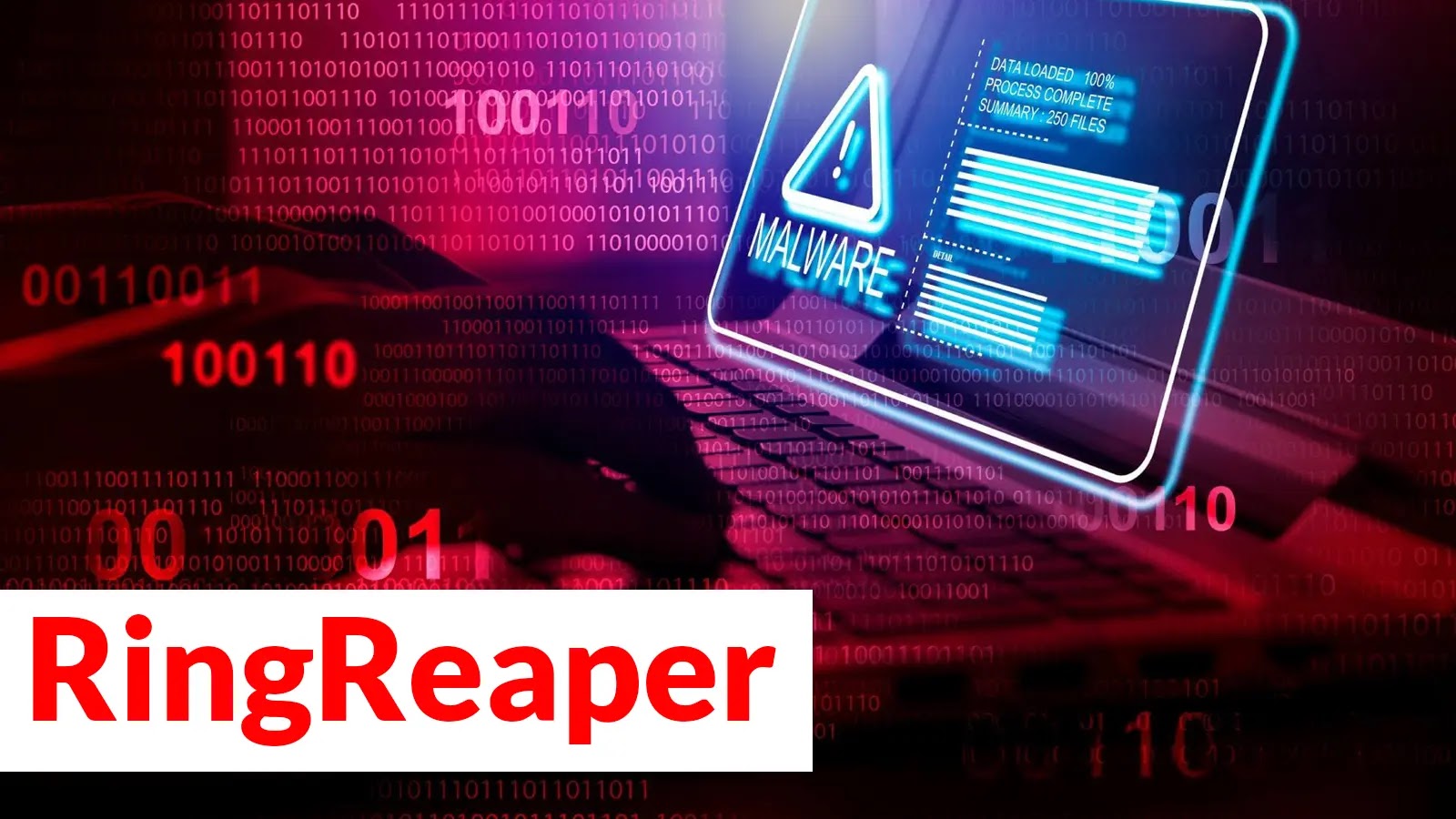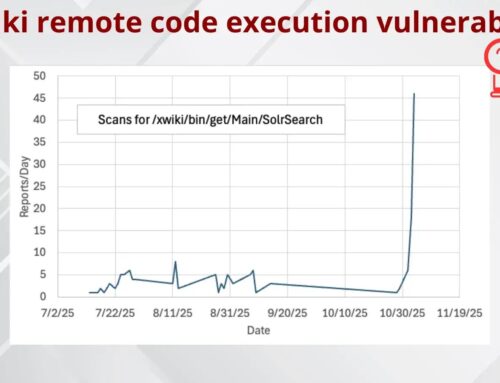
RingReaper Malware Attacking Linux Servers Evading EDR Solutions
Linux servers form the backbone of countless organizations, powering everything from critical web services to intricate data analytics platforms. Their perceived robustness and open-source nature often instill a sense of security. However, a new, sophisticated threat is challenging this perception: RingReaper malware. This recently identified strain is explicitly designed to operate stealthily within Linux environments, demonstrating advanced evasion techniques that make it particularly troublesome for traditional Endpoint Detection and Response (EDR) solutions. Understanding RingReaper’s novel approach to evasion is crucial for any organization relying on Linux infrastructure.
What is RingReaper Malware?
RingReaper is a sophisticated, post-exploitation agent specifically engineered to compromise Linux servers. Unlike common malware that might announce its presence through high resource consumption or suspicious network activity, RingReaper prioritizes stealth and persistence. Its primary innovation lies in its clever utilization of the Linux kernel’s modern asynchronous I/O interface, a feature known as io_uring. This allows the malware to perform covert operations while maintaining minimal visibility to security monitoring tools, making detection exceptionally challenging.
The io_uring Evasion Technique Explained
The core of RingReaper’s evasive capabilities stems from its abuse of io_uring. Traditionally, system calls for I/O operations are synchronous, meaning they block until completion. This synchronous nature can sometimes be monitored by EDR solutions by hooking into these calls. io_uring, introduced in Linux kernel 5.1, provides a highly efficient, asynchronous interface for I/O operations. Instead of direct system calls, applications submit I/O requests to a shared ring buffer in kernel space. The kernel processes these requests asynchronously and places completions in another ring buffer. By leveraging io_uring, RingReaper can:
- Operate in the background: It can initiate operations without directly invoking traditional, easily monitored system calls.
- Minimize footprint: Its interactions occur through the efficient
io_uringmechanism, reducing detectable process activity. - Bypass hooks: Many EDR solutions rely on hooking into specific synchronous system calls. RingReaper’s asynchronous approach can circumnavigate these common detection mechanisms, essentially flying under the radar.
Why Traditional EDR Solutions Struggle Against RingReaper
The sophisticated evasion techniques employed by RingReaper highlight a critical gap in many existing EDR strategies for Linux. Traditional EDR solutions often rely on:
- Signature-based detection: Identifying known malicious file hashes or patterns, which RingReaper, as a new threat, would initially evade.
- Heuristic analysis of common syscalls: Monitoring for suspicious sequences of traditional system calls. RingReaper’s use of
io_uringbypasses these direct syscalls. - Process monitoring: Observing process creation, modification, and termination. While RingReaper runs as a process, its I/O operations are obfuscated through
io_uring. - Network traffic analysis: Detecting command-and-control (C2) communication. While relevant, this comes post-compromise and might be encrypted or subtly egressed.
The malware forces security professionals to consider detection mechanisms that go beyond standard syscall auditing and delve deeper into kernel-level asynchronous operations.
Post-Exploitation Capabilities and Impact
As a post-exploitation agent, RingReaper is deployed *after* an initial compromise. This means it’s not designed to be the initial entry vector but rather a persistent foothold and operational tool for adversaries. Once established, its capabilities likely include:
- Data exfiltration: Covertly siphoning sensitive data from the compromised server.
- Remote code execution: Executing arbitrary commands on the target system.
- Establishing persistence: Ensuring its survival across reboots and detection attempts.
- Lateral movement: Using the compromised server as a pivot point to attack other systems within the network.
- Obscuring malicious activity: Making forensic analysis and incident response significantly more challenging.
The primary impact is a prolonged and undetected presence within the network, leading to significant data breaches, sustained operational disruption, and severe reputational damage.
Remediation Actions and Enhanced Detection Strategies
Defending against advanced threats like RingReaper requires a shift in mindset and an expansion of detection capabilities. Here are actionable remediation and detection strategies:
- Upgrade Linux Kernels: While
io_uringis a legitimate kernel feature, ensuring your Linux distributions are running the latest stable kernel versions can help patch other vulnerabilities that might be used for initial access. Keep an eye on security advisories for vulnerabilities related toio_uringor similar kernel interfaces specifically, though none are widely publicized for RingReaper’s exploitation of it directly. - Implement Advanced Kernel Monitoring: Move beyond basic syscall auditing. Look into extended Berkeley Packet Filter (eBPF) based tools for deep, low-level kernel event monitoring. Tools leveraging eBPF can provide visibility into
io_uringactivity in a way that traditional EDRs might miss. - Behavioral Analytics: Focus on anomalies in system behavior rather than just signatures. Monitor for unusual process memory access, network connections to unknown or suspicious IPs, and unexpected file modifications, even if the direct I/O operations are hidden.
- Integrity Monitoring: Regularly verify the integrity of critical system files and binaries. Any unauthorized modifications could indicate compromise.
- Least Privilege and Network Segmentation: Minimize the attack surface. Apply the principle of least privilege to all users and services. Segment your network to limit lateral movement if a server is compromised.
- Regular Security Audits and Penetration Testing: Proactively test your defenses to identify weaknesses before attackers do. Focus on post-exploitation scenarios.
Recommended Security Tools for Enhanced Linux Threat Detection
| Tool Name | Purpose | Link |
|---|---|---|
| Falco | Cloud-native runtime security, eBPF-powered behavioral monitoring. Can detect anomalous syscall activity. | https://falco.org/ |
| Tracee | Linux runtime security and forensics tool using eBPF. Offers deep visibility into system calls, including io_uring. |
https://aquasecurity.github.io/tracee/ |
| OSSEC | Host-based Intrusion Detection System (HIDS) for log analysis, file integrity monitoring, and rootkit detection. | https://www.ossec.net/ |
| ClamAV | Open-source antivirus engine for detecting trojans, viruses, malware, and other malicious threats. | https://www.clamav.net/ |
| Lynis | Security auditing tool for Unix/Linux systems to check for security hardening and compliance. | https://cisofy.com/lynis/ |
Conclusion
The emergence of RingReaper malware underscores a significant evolution in threats targeting Linux environments. Its sophisticated use of io_uring for evasion represents a formidable challenge to conventional EDR tools and demands a proactive, multi-layered defense strategy. By focusing on deep kernel visibility, behavioral analytics, uncompromising system hygiene, and the intelligent deployment of advanced monitoring tools, organizations can bolster their resilience against future clandestine threats. Staying informed about novel evasion techniques and continuously adapting security postures is paramount in safeguarding critical Linux infrastructure.





